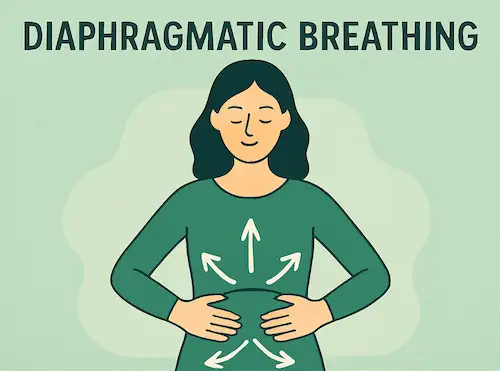Diaphragmatic Breathing: The Foundation of Calm
Also known as belly breathing, diaphragmatic breathing is one of the most effective and foundational breathing techniques for calming the body and mind. If you've ever been told to "take a deep breath," this is what they really meant.

What Is Diaphragmatic Breathing?
Diaphragmatic breathing is a way of breathing deeply into your lungs by engaging your diaphragm, the large muscle beneath your lungs. Instead of your chest rising when you inhale, your belly expands outward.
This technique slows your breathing rate, decreases oxygen demand, and helps trigger the parasympathetic nervous system — the part of your body responsible for rest and recovery.
Why It Works
- Reduces stress hormones: Slower breathing lowers cortisol levels.
- Lowers heart rate and blood pressure: A sign of a relaxed nervous system.
- Improves oxygen exchange: More efficient delivery of oxygen to your body and brain.
- Increases body awareness: Connecting with your breath brings you into the present moment.
How to Practice
- Lie down or sit comfortably with one hand on your chest and one on your belly.
- Inhale slowly through your nose. Your belly should rise — your chest stays relatively still.
- Exhale gently through your mouth. Feel your belly fall.
- Repeat for 1–5 minutes. Stay present and relaxed.
- Try our guided tool here if you want visual rhythm support.
Try It with a Rhythm
Want a breathing pattern to follow? Try the 4-7-8 technique or explore box breathing — both start with diaphragmatic breathing as their base.
Final Thoughts
Diaphragmatic breathing is more than a technique, it’s a reset button. Whether you’re dealing with stress, anxiety, or just need a break, practicing this kind of breathing can bring immediate relief and long-term calm.
